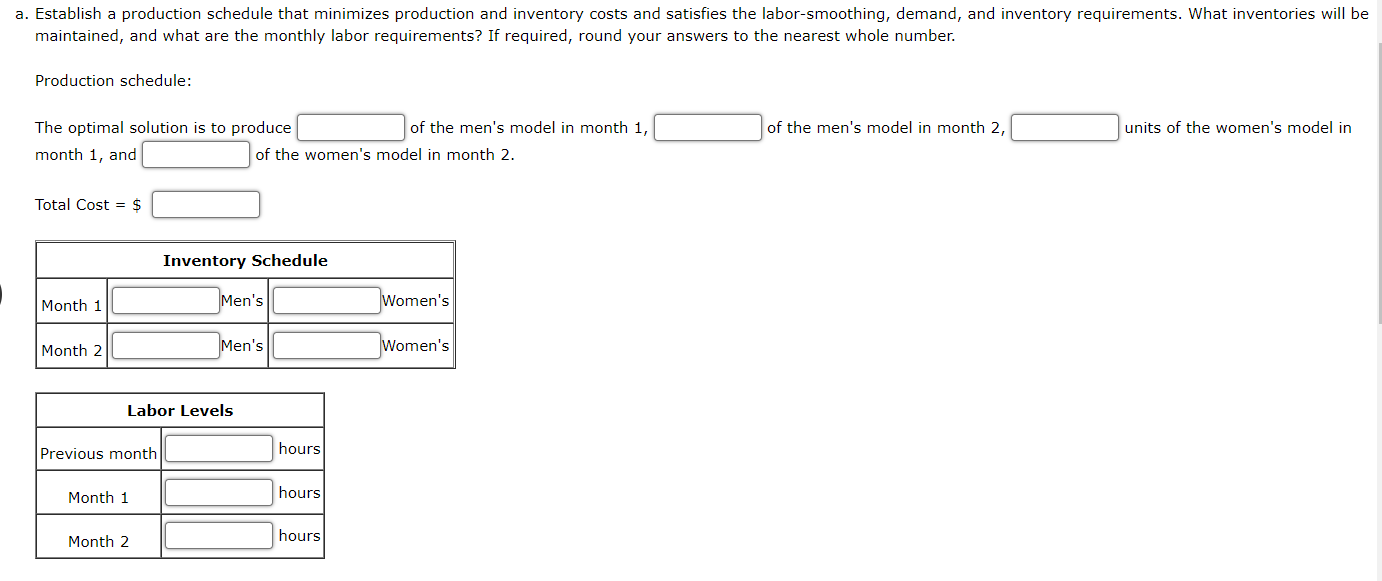(Solved): Problem 4-19 (Algorithmic) The Silver Star Bicycle Company will be manufacturing both mens and wo ...
Problem 4-19 (Algorithmic)
The Silver Star Bicycle Company will be manufacturing both men’s and women’s models of its Easy-Pedal 10-speed bicycles during the next two months. Management wants to develop a production schedule indicating how many bicycles of each model should be produced in each month. Current demand forecasts call for 150 men’s and 125 women’s models to be shipped during the first month and 220 men’s and 170 women’s models to be shipped during the second month. Additional data are shown:
| Production | Labor Requirements (hours) | Current | ||
| Model | Costs | Manufacturing | Assembly | Inventory |
| Men's | $130 | 2.3 | 1.2 | 30 |
| Women's | $100 | 1.6 | 1 | 40 |
Last month the company used a total of 1000 hours of labor. The company’s labor relations policy will not allow the combined total hours of labor (manufacturing plus assembly) to increase or decrease by more than 100 hours from month to month. In addition, the company charges monthly inventory at the rate of 2% of the production cost based on the inventory levels at the end of the month. The company would like to have at least 35 units of each model in inventory at the end of the two months.
- Establish a production schedule that minimizes production and
inventory costs and satisfies the labor-smoothing, demand, and
inventory requirements. What inventories will be maintained, and
what are the monthly labor requirements? If required, round your
answers to the nearest whole number.
Production schedule:
The optimal solution is to produce fill in the blank 1 of the men's model in month 1, fill in the blank 2 of the men's model in month 2, fill in the blank 3 units of the women's model in month 1, and fill in the blank 4 of the women's model in month 2.
Total Cost = $ fill in the blank 5
Inventory Schedule Month 1 fill in the blank 6Men's fill in the blank 7Women's Month 2 fill in the blank 8Men's fill in the blank 9Women's Labor Levels Previous month fill in the blank 10 hours Month 1 fill in the blank 11 hours Month 2 fill in the blank 12 hours - If the company changed the constraints so that monthly labor
increases and decreases could not exceed 50 hours, what would
happen to the production schedule? If required, round your answers
to the nearest whole number.
Production schedule:
The optimal solution is to produce fill in the blank 13 of the men's model in month 1, fill in the blank 14 of the men's model in month 2, fill in the blank 15 units of the women's model in month 1, and fill in the blank 16 of the women's model in month 2.
Total Cost = $ fill in the blank 17
How much will the cost increase?
$ fill in the blank 18


